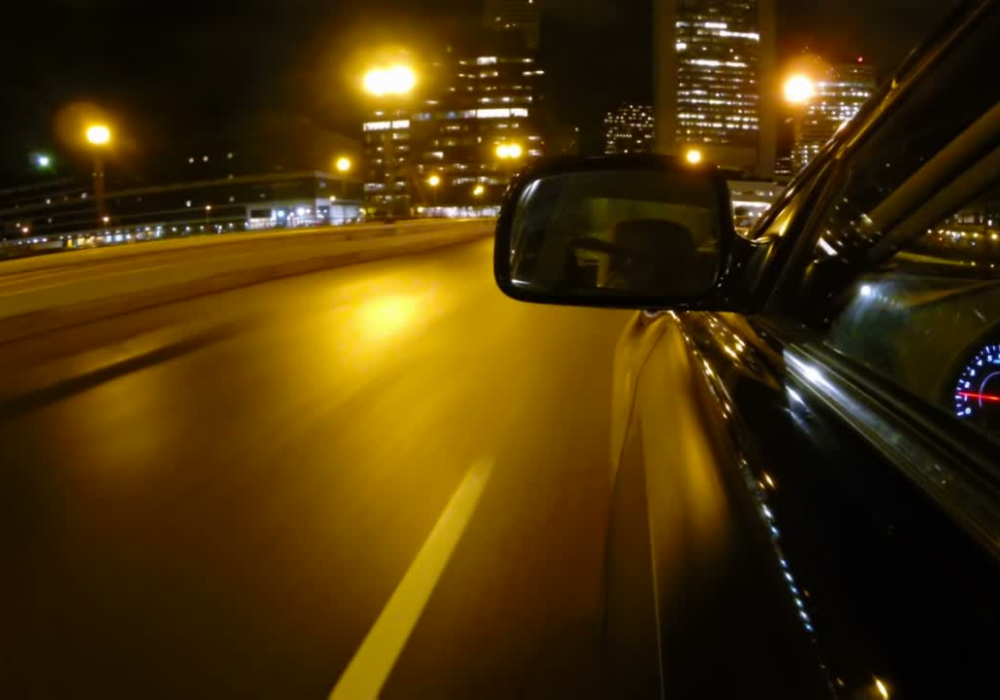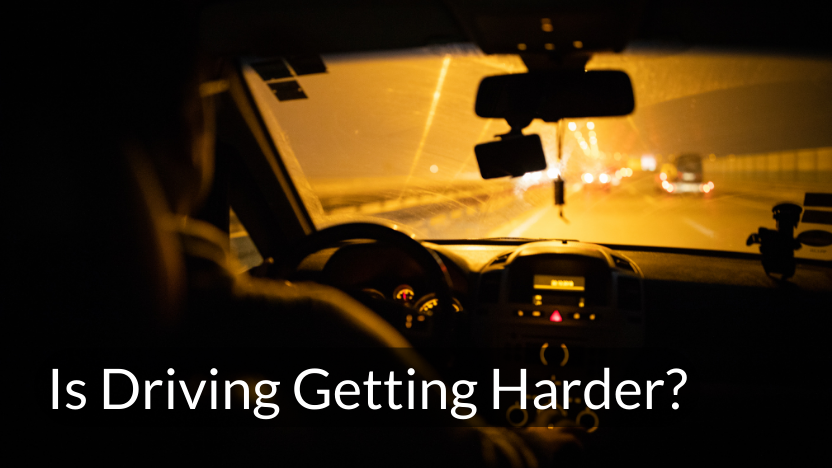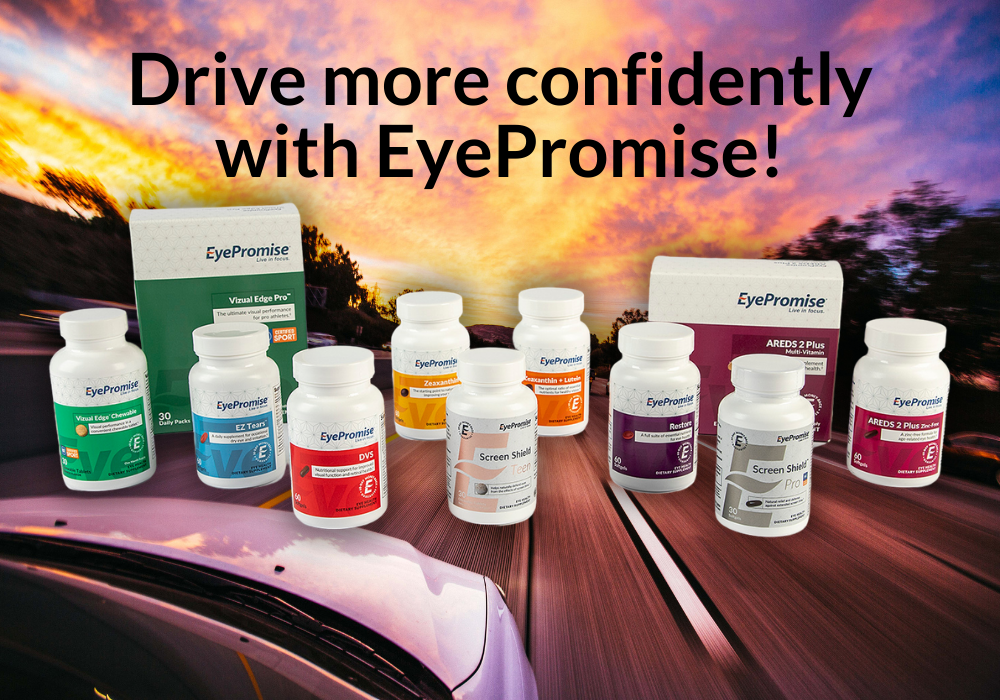Why Is Driving Getting Harder, Especially At Night?
Posted by EyePromise on Oct 20th 2022
For many, driving is the epitome of independence. However, there are many factors that go into driving safely, and vision plays a huge part in that. While we become more comfortable with being on the road with experience, our vision naturally declines as we age, making it more difficult to drive confidently, especially at night.
Aging Eyes & Their Impact On Driving
As mentioned, our vision naturally declines as we age. It’s usually subtle, so many of us don’t realize the changes until they are affecting things we love (reading, knitting, needlepoint, etc.). Some of the functions affected by time include:
- Low light vision – it becomes more difficult to see in low-light conditions.
- Glare and light sensitivity – our eyes become more sensitive to bright lights and take longer to recovery from the “temporary blindness” experienced after a flash exposure.
- Visual acuity (sharpness) – declining acuity is why many people end up with readers!
- Contrast sensitivity – it’s more difficult to distinguish subtle differences between objects that are close to the same color.
- Reaction time/visual processing speed – our brains slow as we age, too, which slows the rate of information processing from our eyes.
Why This Makes Driving Challenging

In any driving scenario, vision is crucial to arriving to your destination safely. Visual acuity helps with reading road signs as well as indicators within the vehicle (the miles until you need gas or an oil change).
Light sensitivity can impact driving during the day, making it difficult to look in the direction of the sun. Glare recovery add to the difficulties of driving at night, whether it’s direct headlights or their reflection off a building or wet road. Glare can also be difficult during sun rise/set when the light is reflected off buildings, water, or snow.
Low light vision is also critical for driving at night and low visibility situations like fog or downpour. Contrast sensitivity is also important in low visibility settings, helping you to identify potholes to avoid and distinguish if that object flying across the road is a box or a cat.
Reaction time and visual processing speed helps you react to what you’re seeing on the road. Good processing and reaction speeds help you avoid accidents and arrive safely.
A Solution for Keeping Your Driving Independence
Aging eyes are inevitable, but you can help keep your eyes in tiptop shape throughout the years with nutritional support. That’s right! Nutrition can help your eyes maintain crisp, clear vision! But don’t worry, we won’t suggest you start eating 20 ears of corn a day to sustain healthy vision. Instead, we recommend eye vitamins that have been proven to positively affect eye health over the years.
EyePromise® is the #1 eye doctor-recommended eye vitamins available. They deliver the nutrients needed to support and protect vision for the long haul. Each formulation is equipped with high-quality, natural ingredients that have been demonstrated to improve vision in clinical trials. With the most comprehensive line of eye vitamins, EyePromise has a product for almost any eye health need!
Start driving with confidence again by starting your EyePromise eye vitamin regimen today!


